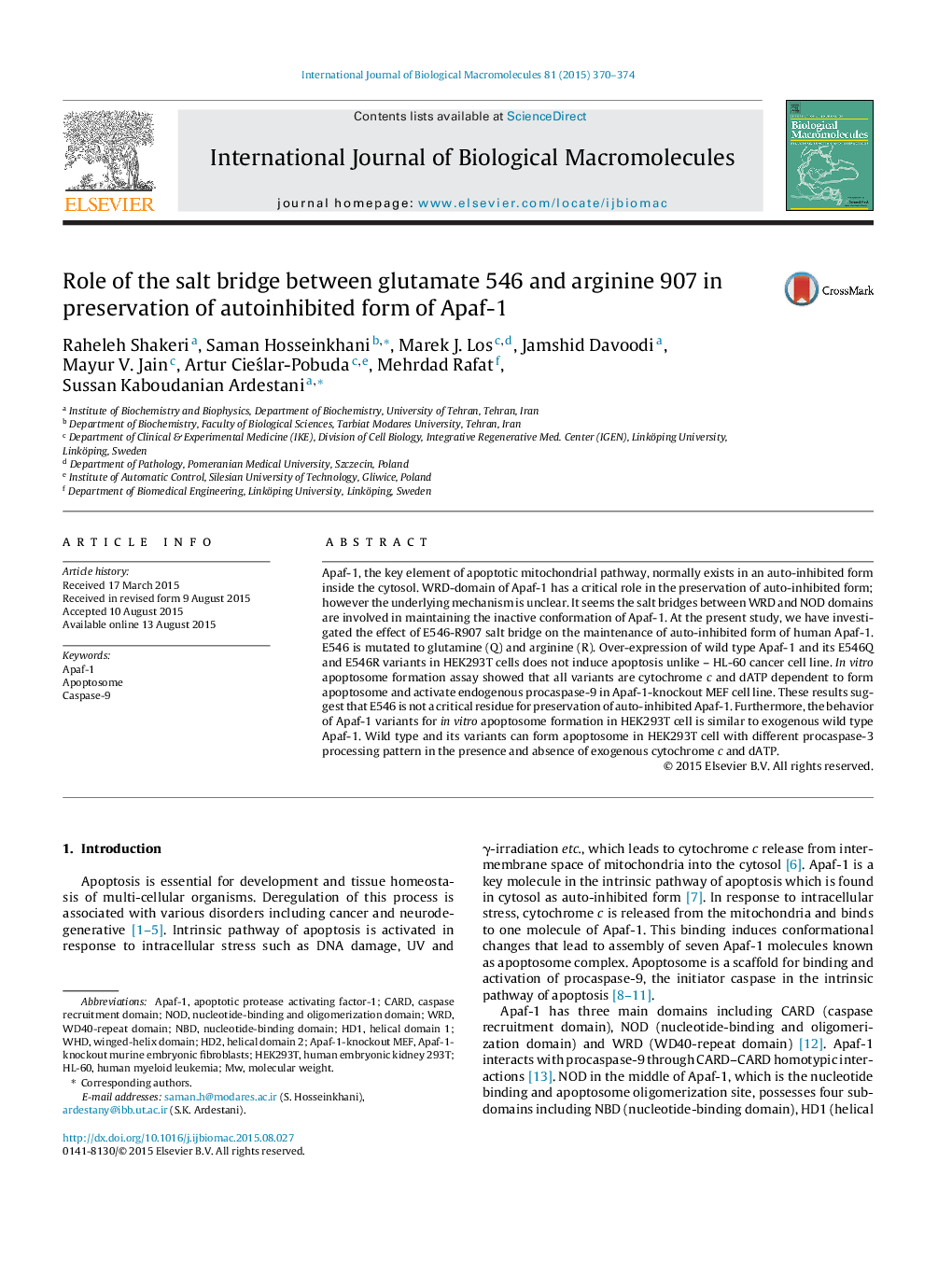| Article ID | Journal | Published Year | Pages | File Type |
|---|---|---|---|---|
| 8330308 | International Journal of Biological Macromolecules | 2015 | 5 Pages |
Abstract
Apaf-1, the key element of apoptotic mitochondrial pathway, normally exists in an auto-inhibited form inside the cytosol. WRD-domain of Apaf-1 has a critical role in the preservation of auto-inhibited form; however the underlying mechanism is unclear. It seems the salt bridges between WRD and NOD domains are involved in maintaining the inactive conformation of Apaf-1. At the present study, we have investigated the effect of E546-R907 salt bridge on the maintenance of auto-inhibited form of human Apaf-1. E546 is mutated to glutamine (Q) and arginine (R). Over-expression of wild type Apaf-1 and its E546Q and E546R variants in HEK293T cells does not induce apoptosis unlike - HL-60 cancer cell line. In vitro apoptosome formation assay showed that all variants are cytochrome c and dATP dependent to form apoptosome and activate endogenous procaspase-9 in Apaf-1-knockout MEF cell line. These results suggest that E546 is not a critical residue for preservation of auto-inhibited Apaf-1. Furthermore, the behavior of Apaf-1 variants for in vitro apoptosome formation in HEK293T cell is similar to exogenous wild type Apaf-1. Wild type and its variants can form apoptosome in HEK293T cell with different procaspase-3 processing pattern in the presence and absence of exogenous cytochrome c and dATP.
Keywords
Related Topics
Life Sciences
Biochemistry, Genetics and Molecular Biology
Biochemistry
Authors
Raheleh Shakeri, Saman Hosseinkhani, Marek J. Los, Jamshid Davoodi, Mayur V. Jain, Artur CieÅlar-Pobuda, Mehrdad Rafat, Sussan Kaboudanian Ardestani,
